Did you know: Riders who keep up with routine motorcycle maintenance are up to 30% less likely to experience roadside breakdowns? Whether you’re new to motorcycles or a seasoned enthusiast, learning step-by-step DIY motorcycle maintenance and repair tips empowers you to maximize safety, extend your bike's life, and enjoy a smoother ride. This comprehensive guide gives you proven methods, hands-on checklists, and expert advice that make caring for your motorcycle easier than ever—so you can avoid costly repairs and ride with confidence!
Unlock the Benefits of Step-by-Step DIY Motorcycle Maintenance and Repair Tips
Diving into step-by-step DIY motorcycle maintenance and repair tips goes beyond simply saving a few dollars—it’s about gaining control and insight into how your machine works. When you can handle routine maintenance jobs, you develop confidence and peace of mind, knowing your motorcycle is in top condition . This practice not only enhances the longevity of your bike’s components, from the critical motorcycle chain to the all-important oil filter , but also ensures each ride is smooth and worry-free.
DIY motorcycle care allows you to catch potential problems early. For example, by routinely checking your oil level and air filter , you’ll prevent engine strain and enjoy improved performance. The ripple effect of regular, expert-backed tasks like oil changes , tyre pressure checks, and brake pad inspections dramatically lowers your risk of emergencies and supports better fuel efficiency. Following a clear schedule, and getting familiar with basic maintenance tasks , grants every rider the tools for a safer, more enjoyable journey.

Did You Know? Keeping Up With Motorcycle Maintenance Increases Safety by 30%
-
Regular motorcycle maintenance reduces the likelihood of unexpected breakdowns.
-
Maintenance jobs like oil changes and brake checks boost performance and fuel efficiency.
-
Well-maintained bikes have longer lifespans and greater resale value.
What You'll Gain: Essential Insights from Step-by-Step DIY Motorcycle Maintenance and Repair Tips
-
How to perform motorcycle maintenance with confidence—even if you’re a beginner.
-
Expert-approved motorcycle repair routines that keep your bike running smoothly.
-
Secrets to extending your motorcycle’s life with proven DIY motorcycle tactics and habits.
Understanding Routine Motorcycle Maintenance: Why Step-by-Step DIY Maintenance Matters
Engaging in routine motorcycle maintenance is fundamental for both experienced riders and those new to motorcycles. Over time, even the most reliable bikes require regular attention—neglecting a simple maintenance task like chain lubrication or checking brake fluid can lead to costly repairs or unexpected failures. Adopting a step-by-step approach to your maintenance schedule means addressing small issues before they become major problems. Simple habits such as topping up fluids, monitoring tire wear, or cleaning air filters ensure your ride stays efficient and safe.
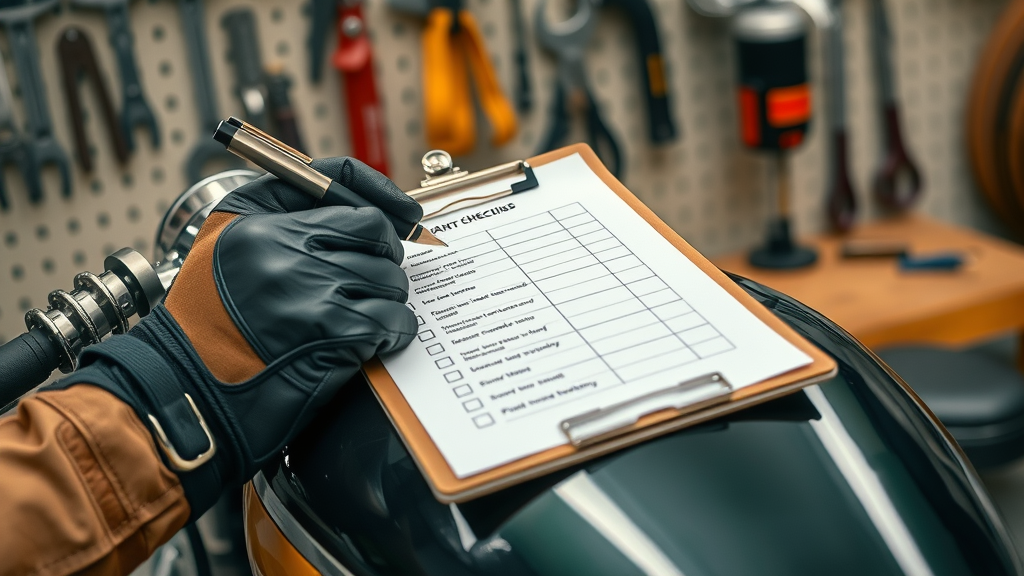
Master Your Maintenance Schedule for Long-Term Motorcycle Health
Building a personalized maintenance schedule is the cornerstone of reliable bike ownership. By referencing your service manual or shop manual , you can tailor a checklist that aligns with your bike’s specific make and model—addressing priorities like oil changes , brake pads , and routine inspections. Sticking to these tasks, and recording each maintenance job, helps maintain optimal performance, maximizes each component’s lifespan, and reinforces safe riding habits.
-
Importance of a regular maintenance schedule: Regular care reduces downtime and major faults, preventing long-term damage and maintaining your bike’s value.
-
How to create a personalized maintenance checklist: Break down manufacturer recommendations by mileage, riding season, or calendar week and set digital or manual reminders for each task.
Getting Started with Step-by-Step DIY Motorcycle Maintenance and Repair Tips
Jumping into DIY motorcycle care might feel intimidating, but with the right tools and mindset, any rider can master these essential skills. The key is preparation: before tackling any maintenance job, gather the necessary tools, review your service manual , and ensure your workspace is organized. Always prioritize safety by wearing gloves, goggles, and having a clean, well-lit environment. Equipping yourself with fundamental know-how puts powerful control in your hands—and keeps your motorcycle running smoothly every season.
Must-Have Tools for DIY Motorcycle Maintenance and Repair
-
Invest in a solid toolkit: quality wrenches, screwdrivers, a socket set, tyre pressure gauge, and a torque wrench are non-negotiable.
-
Essential extras: oil tray, funnel, brake pad spreader, lubricants, and a detailed logbook to track your maintenance tasks .
-
Choose tools built for motorcycles rather than automotive ones for best fit and finish.
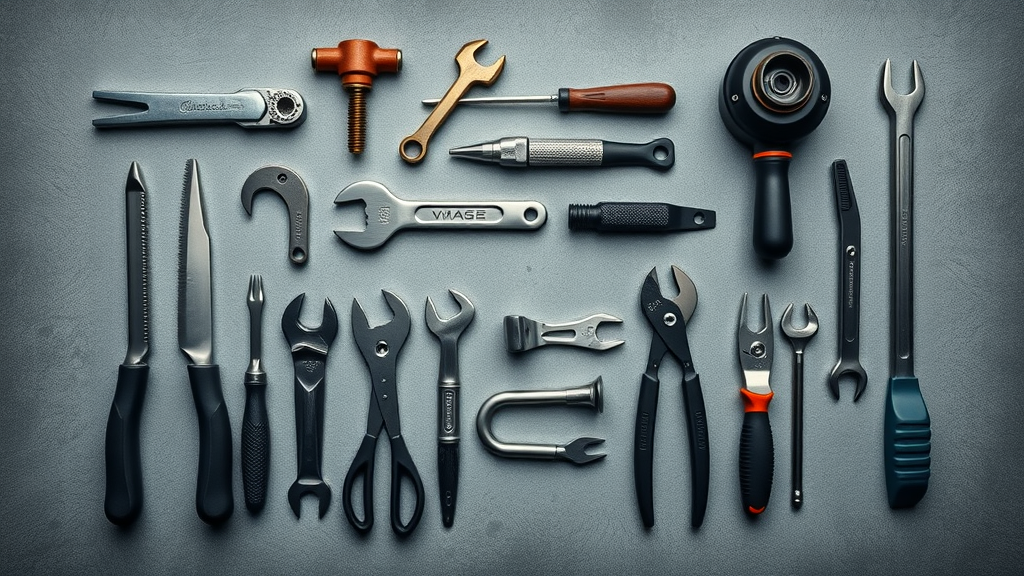
Safety First: Preparing Your Workspace for Motorcycle Maintenance
-
Designate a clear, ventilated zone with sturdy flooring and proper lighting for every maintenance job.
-
Keep tools and parts organized on shelves or toolboxes to prevent accidental injuries and misplaced items.
-
Always suit up: safety goggles, gloves, and appropriate clothing reduce risks, especially when working with fluids or sharp parts.

The Core Checklist: Step-by-Step DIY Motorcycle Maintenance and Repair Tasks
Every maintenance task you perform on your motorcycle builds expertise and ensures a safer, longer-lasting ride. Here’s your actionable guide to the fundamental jobs you’ll need to master.
1. Motorcycle Oil Change: Step-by-Step Guide for DIY Motorcycle Maintenance
-
Preparation and materials: Gather new motorcycle oil, a correct oil filter, oil pan, a wrench, funnel, rags, and gloves.
-
Locate and drain old oil: Warm up your engine, place the oil pan underneath, and carefully loosen the drain plug to release the oil.
-
Replace oil filter: Unscrew the old filter, lubricate and install the new one according to your shop manual's instructions.
-
Refill with new motorcycle oil: Pour in manufacturer-approved oil, being careful not to overfill.
-
Check oil level and for leaks: Start the engine, let it settle, then use the dipstick to check the oil level and monitor for leaks under the bike.
“Neglecting a routine oil change is one of the fastest ways to shorten your engine’s life.” – Motorcycle Expert
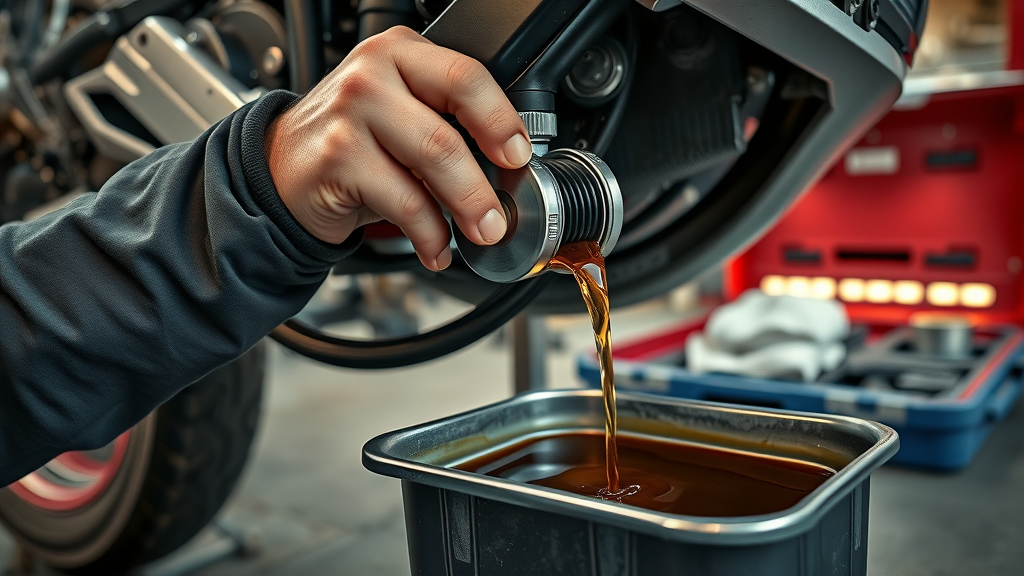
2. Maintaining the Air Filter: Essential Tips for Efficient Motorcycle Repair
Your motorcycle’s air filter is critical for optimal engine performance—keeping debris out and airflow smooth. There are two main types: disposable (which need periodic replacement) and reusable (which can be cleaned). To access your air filter, generally, you’ll remove the seat or a side panel as instructed in your service manual . Clean or replace the air filter whenever it appears dirty, or if you notice sluggish performance or reduced fuel economy. A clogged air filter restricts airflow and can cause long-term engine problems. Fresh air filters are a simple DIY motorcycle fix that pays huge dividends in engine health.
-
Disposable air filters: Replace every 6,000 miles or as indicated in the manual.
-
Reusable air filters: Rinse in water or special cleaner, dry thoroughly, and re-install.
-
Signs to watch for: Difficulty starting, poor acceleration, or visible dirt build-up.
3. Brake Fluid and Brake Pads: DIY Motorcycle Maintenance for Optimal Stopping Power
Staying on top of your brake fluid and brake pads is vital for rider safety. Brake fluid absorbs moisture over time, reducing its effectiveness and risking brake fade. Check and top up brake fluid regularly to maintain optimal brake lever feel and response. Inspect your brake pads for thickness—most should be replaced at about 2mm remaining. Failing to maintain motorcycle brake systems can result in longer stopping distances and brake system failure. Know the warning signs—noisy brakes, a spongy pedal, or reduced braking power—so you can perform proactive maintenance and avoid accidents.
-
Replace brake fluid: Every 1-2 years, or sooner if color has darkened.
-
Check & top up: Ensure fluid is at recommended levels and free from contamination.
-
Inspect brake pads: Look for cracks, uneven wear, or thin pads—replace as needed for safety.
-
Symptoms of issues: Squealing, grinding, or decreased braking responsiveness.
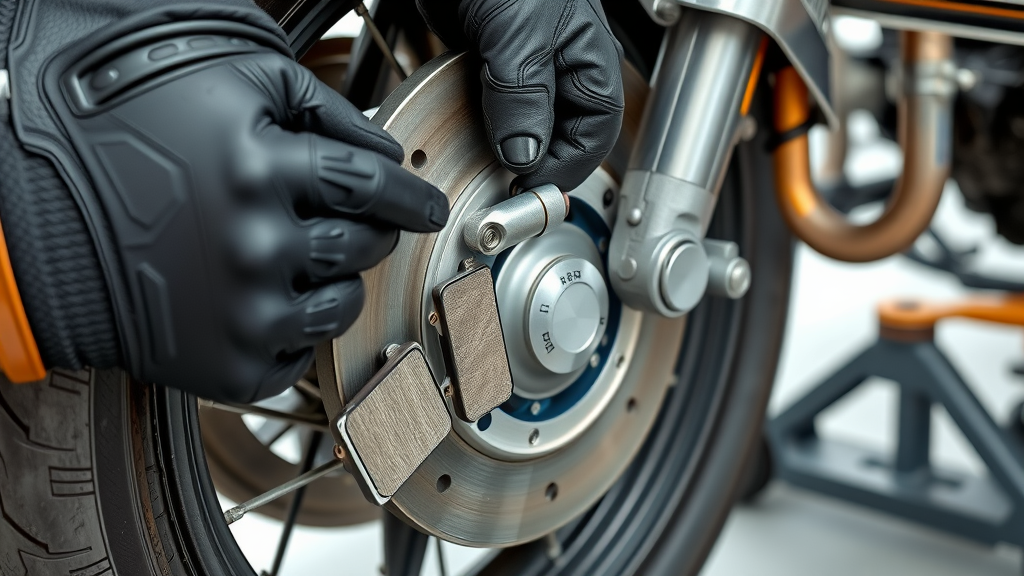
4. Your Motorcycle Chain: Maintenance Tasks That Prevent Expensive Repairs
The motorcycle chain directly affects your ride’s safety and efficiency. Keep it clean and lubricated to prevent rapid wear and component failure. Inspect chain tension often: a chain that is too tight or too loose can damage both chain and sprockets. Use a chain gauge or follow the manufacturer’s maintenance schedule for proper adjustment. Don’t overlook chain wear; check for stiff links, rust, or tight spots during routine maintenance jobs. A well-cared-for chain means a longer-lasting drive system and a smoother ride every time.
-
Clean, lubricate, and adjust monthly or every 500 miles.
-
Check tension: Refer to the manual for the correct slack—usually about 1-1.5 inches of play.
-
Chain issues: Look for red flags such as visible rust, excessive noise, or skipping under load.
5. Tyre Pressure and Tread: Stay Safe with Step-by-Step DIY Motorcycle Maintenance
Proper tyre pressure and tread depth are crucial for grip, stability, and control. Riding on under-inflated or over-inflated tires increases wear and reduces braking efficiency. Use a digital tyre gauge to check pressure when tires are cold, according to your shop manual ’s specs. Adjust pressure for passenger loads or different weather conditions. Frequently inspect tread for flats, punctures, or excessive wear, as compromised tires endanger every ride and threaten top condition performance.
-
Check tyre pressure weekly and before long rides.
-
Adjust according to manual for weight and seasonal changes.
-
Monitor tread: Replace tires if tread depth is below 2mm or uneven wear is visible.
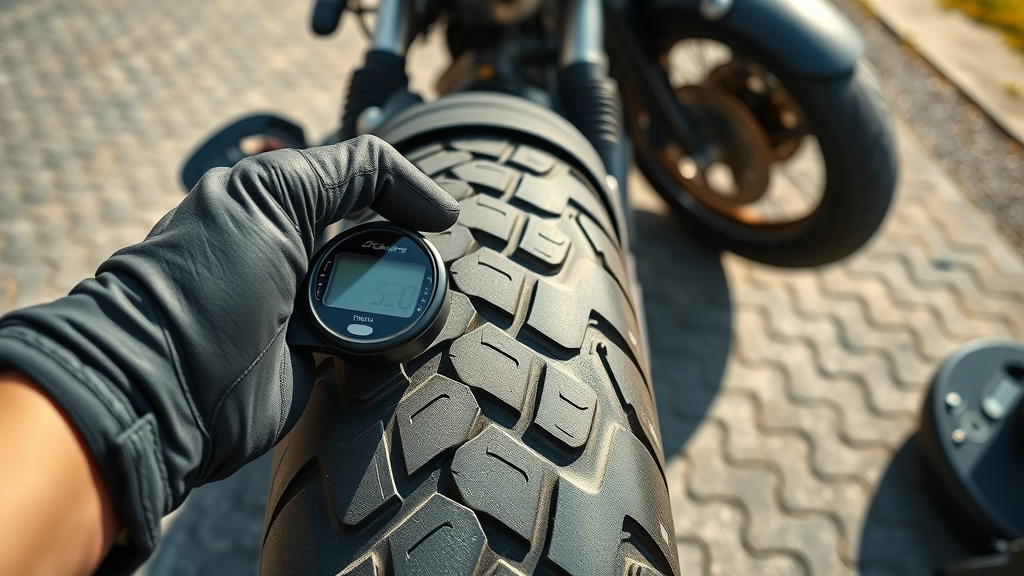
Importance of a Regular Motorcycle Maintenance Schedule for Longevity
|
Common Maintenance Tasks |
Recommended Frequency |
Key Benefits |
|---|---|---|
|
Oil Change |
Every 3,000-5,000 miles |
Engine health |
|
Air Filter Clean/Replace |
Every 6,000 miles |
Optimal airflow |
|
Brake Pad Inspection |
Every 4,000 miles |
Improved safety |
|
Chain Adjustment |
Every 500 miles |
Smooth ride |
|
Tyre Pressure Check |
Weekly |
Better control |
Advanced DIY Motorcycle Repair: Troubleshooting Common Problems
Sometimes, even diligent riders encounter mysterious noises or performance dips. Successful motorcycle repair starts with recognizing early warning signs: unusual engine sounds, hesitating acceleration, or flickering lights. Systematically check for issues by inspecting visible components, such as the air filter , chain, or oil leaks. Try addressing simple culprits first—switching a dirty air filter, adjusting the chain, or tightening a loose bolt. For electrical faults or engine internals, consult an expert or qualified mechanic. Early intervention is often the difference between a quick fix and costly downtime.
Diagnosing and Solving Motorcycle Repair Issues at Home
-
Spot early warning signs: Pay attention to vibrations, strange sounds, or performance drops.
-
Step-by-step troubleshooting: Isolate one system at a time—start with obvious culprits, and use the service manual for reference.
-
Know when to seek help: Don’t risk complex motorcycle repair without technical experience—certified mechanics are best for internals and advanced electronics.

Essential Tips for Keeping Your DIY Motorcycle Maintenance On Track
Developing a Maintenance Routine You Can Stick To
-
Set digital reminders on your calendar or phone to alert you to regular maintenance tasks.
-
Stay motivated by creating visible checklists or progress charts in your garage workspace.
-
Reward yourself for consistent upkeep with a new accessory or planned ride.
Top 10 Mistakes to Avoid When Doing Step-by-Step DIY Motorcycle Maintenance
-
Overtightening bolts: Risk of stripping threads or cracking casings.
-
Forgetting scheduled maintenance tasks: Leads to surprise breakdowns and higher repair bills.
-
Neglecting safety checks: Always double-check your work and wear safety gear for every job.
-
Skipping the service manual : Each motorcycle has unique specs—always reference the correct procedures.
-
Using car parts/tools: Only motorcycle-specific gear will ensure proper fit and function.
-
Reusing old fluids: Fresh oil, brake fluid, and coolant are critical for system health.
-
Ignoring warning lights: Dash alerts shouldn’t be brushed off or reset without finding the root cause.
-
Setting up in a cluttered workspace: Disorganization leads to mistakes and lost parts.
-
Assuming torque is “tight enough”: Use a calibrated torque wrench for critical fasteners.
-
Neglecting to keep a maintenance record: Without clear logs, components can get overlooked, affecting safety and performance.

Expert Quotes on the Value of Step-by-Step DIY Motorcycle Maintenance and Repair Tips
“Learning DIY motorcycle maintenance builds rider confidence and independence.” – Industry Veteran
Follow Along: Changing Motorcycle Oil Like a Pro at Home
Visual Guide: Inspecting and Replacing Brake Pads
Chain Maintenance Made Easy in 3 Minutes
Step-by-Step DIY Motorcycle Maintenance and Repair Tips: Recommended Schedules and Record Keeping
-
Use a maintenance log or smartphone app to record each maintenance job and schedule upcoming ones.
-
Compare digital and paper record-keeping: Digital apps send reminders; paper logs offer visual progress at-a-glance.
-
Stay proactive: Mark calendar reminders at recommended service intervals for each part—no task gets missed.

Comprehensive List: Motorcycle Maintenance Tasks for Every Season
-
Spring: Full inspection, oil change, brake check
-
Summer: Tyre pressure, chain maintenance, cooling system check
-
Fall: Battery check, brake fluid, air filter
-
Winter: Fuel stabilizer, storage prep, regular starts

How Step-by-Step DIY Motorcycle Maintenance and Repair Tips Save Money
-
Reduced labor costs: Tackling easy maintenance jobs at home eliminates expensive mechanic bills.
-
Preventing major repair bills: Early detection and intervention stop small issues from becoming major repairs.
-
Maximizing the lifespan of every part: Regular care extends the service life of your motorcycle chain , air filter , brake pads , and other critical components.
People Also Ask: Step-by-Step DIY Motorcycle Maintenance and Repair Tips
What Basic Motorcycle Maintenance Can You Do Yourself?
-
Basic maintenance tasks include oil changes, chain lubrication, brake pad inspections, air filter replacements, and regular tyre pressure checks. These jobs require only basic tools and minimal mechanical experience, making them accessible for most riders determined to keep their bike in top condition.
How Often Should You Perform DIY Motorcycle Maintenance?
-
Always refer to your motorcycle’s manual for the ideal schedule, but typical checks should occur at least every 1,000 miles or monthly. Regular reviews improve reliability, ensure components are running smoothly, and prevent overlooked issues. Create reminders on your phone or calendar for each task.
What Tools Are Needed for Step-by-Step DIY Motorcycle Maintenance and Repair Tips?
-
You’ll need basic hand tools: wrenches, screwdrivers, a socket set, a quality oil tray, lubricant, a tyre pressure gauge, and a detailed maintenance logbook. Specialized tools, like a torque wrench, may be necessary for some jobs, and always consult your bike's shop manual.
When Should You Seek Professional Motorcycle Repair Instead of DIY?
-
If you encounter internal engine problems, electrical system faults, or advanced repairs documented in your shop manual, it’s best to consult qualified motorcycle mechanics. Attempting complex motorcycle repair without experience can risk your safety and your bike’s functionality.
Frequently Asked Questions About Step-by-Step DIY Motorcycle Maintenance and Repair Tips
-
Can I do motorcycle maintenance without experience? Yes, many tasks are beginner-friendly. Take your time, follow guides, and reference your service manual frequently.
-
Is DIY motorcycle repair safe for new riders? With the right gear and by sticking to basic jobs, yes. Always prioritize safety by using gloves, goggles, and working in a clear space.
-
What are the benefits over professional services? DIY work saves money, builds confidence, and gives you deeper understanding of your machine.
-
How do I find my motorcycle’s maintenance schedule? Your owner’s manual or service manual lists intervals by mileage and time—write these down or set phone reminders.
-
What’s the biggest advantage of regular DIY maintenance? Catching issues early means less risk of breakdowns, smoother rides, and lower repair costs throughout your bike’s life.
Key Takeaways from Step-by-Step DIY Motorcycle Maintenance and Repair Tips
-
A consistent DIY motorcycle maintenance routine results in fewer repairs and better performance.
-
Learning step-by-step motorcycle maintenance helps you understand your bike’s unique needs.
-
Proper record-keeping simplifies motorcycle repair scheduling and ensures no task is missed.
-
The right tools and knowledge encourage safer, more confident riding for years to come.
Get Started – Bring Your Motorcycle to Peak Performance with Step-by-Step DIY Motorcycle Maintenance and Repair Tips
Ready to protect your investment and ride worry-free? Call Us Today: 847-458-4858 for expert help and get started with your next motorcycle maintenance project!
For riders looking to enhance their DIY motorcycle maintenance skills, the following resources offer valuable insights:
-
“DIY Motorcycle Maintenance: Tips, Tricks, and Details” ( benheine.com ) provides crucial safety precautions and detailed steps for tasks like oil changes, ensuring you perform maintenance safely and effectively.
-
“Top Five DIY Motorcycle Repair Jobs” ( bigcountrypowersports.com ) outlines essential repair tasks, including chain adjustments and battery maintenance, helping you address common issues and keep your bike in top condition.
By exploring these guides, you’ll gain practical knowledge to confidently maintain and repair your motorcycle, enhancing both its performance and your riding experience.
 Add Row
Add Row  Add
Add 



Write A Comment